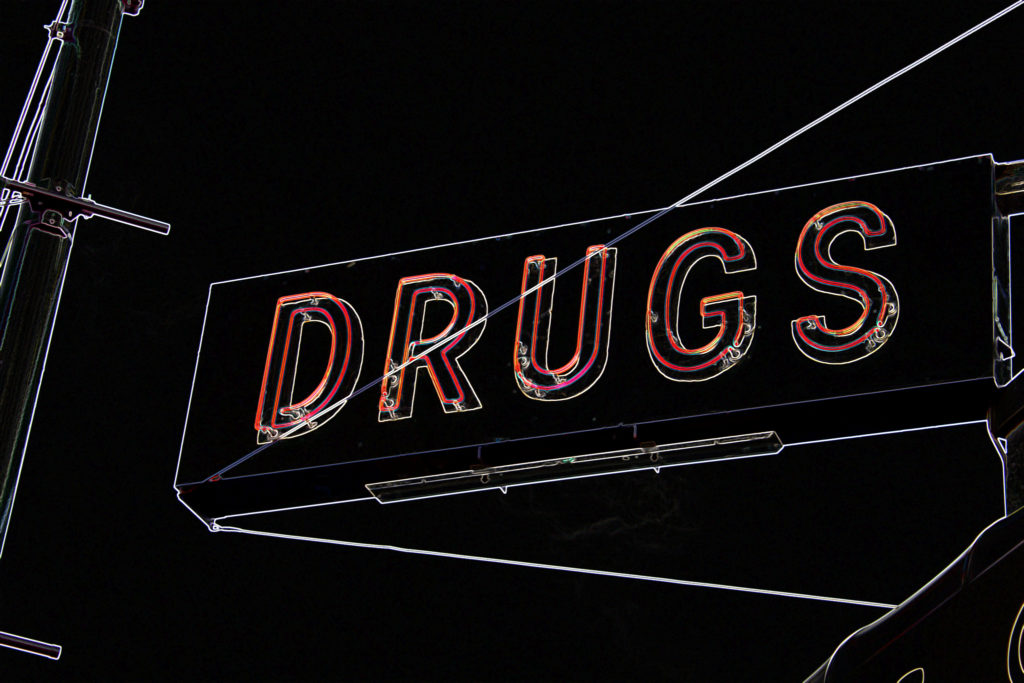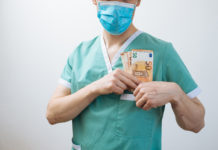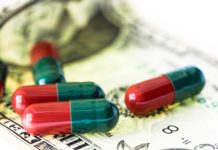A new study, published in CMAJ Open, investigated the claim, often made by pharmaceutical companies, that drug promotion is primarily conducted to inform and educate physicians. Dr. Joel Lexchin’s examination found that many of the top-selling and most-promoted drugs in Canada had little to no therapeutic value.
“Examining whether the medicines that are heavily promoted are the ones that provide the most therapeutic gain may help in determining whether doctors should be using promotional material to inform themselves about therapeutically important drugs.”

The knowledge that drug promotion tactics influence physician prescribing behaviors is “generally accepted,” writes Lexchin. While pharmaceutical companies explain the aim of drug promotion as a means of informing and educating practitioners, many express concerns that the influence of drug promotion may be more harmful than beneficial.
A recent study, conducted in the U.S. found that the top 25 most heavily promoted drugs in 2015 had low therapeutic value, meaning these drugs were deemed to have low effectiveness, safety, novelty, and affordability. In this study, Lexchin researched the drugs that are most heavily promoted in Canada, as well as the therapeutic value of those drugs.
The objective of the study was to observe whether drug promotion is being used to inform physicians of therapeutically important drugs. Annual reports from QuintilesIMS, a company that publicly and consistently reports the amount of money spent on journal advertisements, the number of visits by drug sales representatives, and the top drugs by sales revenue, were used to gather data on drug promotion.
Lexchin recorded the names of the top 50 drugs promoted in 2013, 2014, and 2015. He excluded drugs that were featured twice (generic and brand names) and instruments used for measuring blood glucose level. In order to determine the therapeutic gain from products, Lexchin referred to two different sources, the Patented Medicine Prices Review Board (PMPRB) and the independent French drug bulletin, Prescrir International.
“I chose these sources because they both provide objective assessments of therapeutic value that do not require any subjective interpretation,” he explains.
Although both sources have slightly different assessment criteria and processes, both primarily assessed drugs on the basis of efficacy and safety. Based on these reviews, the drugs were sorted into three main categories, (1) major therapeutic gain, (2) moderate therapeutic gain, and (3) little to no therapeutic gain. It is important to note, however, that therapeutic information was only available for 53% of the most-promoted drugs and 66% of the top-selling drugs.
Findings demonstrated that 90-96% of the most-promoted drugs were rated as having little to no therapeutic gain. The same was true for 77-79% of the top-selling drugs. The difference in the drugs’ therapeutic value between the top-selling and most-promoted drugs was only significant in the year 2013.
“The finding that there was a difference in therapeutic distribution between the most-promoted drugs and the top-selling drugs in only 1 of the 3 years studied may mean that there are few therapeutically significant products that can be promoted,” writes Lexchin.
Although, he adds that perhaps drugs with high therapeutic value sell without the need to promote them, or are promoted through other methods. Numbers detailing promotional expenditures in 2013 indicate that 96.5% of expenses went toward drugs rated as having little to no therapeutic gain. No proportion of expenditures were devoted to drugs rated as having major therapeutic gain. In 2014, 92% of money spent went toward promoting drugs with little to no therapeutic gain, followed by 93.8% in 2015.
Results of this study find that most promotion and advertising efforts were centered around promoting drugs with little to no therapeutic value, and that the majority of top-selling drugs reflected this pattern as well.
Another study examined promotion through meetings, talks, direct-to-consumer advertising, booths at medical conferences, and more, and found that minimally adequate safety information about drugs was provided in less than 2% of promotions that took place both in Vancouver and Montreal. Given the number of studies in Canada and the U.S. with results highlighting concerning patterns of drug promotion, the issue may be widespread.
“Innovative Medicines Canada, the organization representing the research-based companies, says on its website that its mandate is to provide ‘access to education and information about the appropriate uses of our products and services’ to doctors. The findings of the current study and that by Mintzes and colleagues about sales representatives raise questions about whether this mandate is being fulfilled.”
****
Lexchin, J. (2017). The relation between promotional spending on drugs and their therapeutic gain: a cohort analysis. CMAJ Open, 5(3), E724. doi: 10.9778/cmajo.20170089 (Link)















You don’t see drug commercials for old staples with proven results that are known to benefit people. Think about it.
When was the last time you saw a commercial for penicillin? Insulin? Levothyroxin? You don’t.
I think I have seen an ad for Bayer Aspirin on occasion. (New brand I guess.) Other than that, a good rule of thumb is steer clear of anything they need to pay to show on TV. Run from the dancing pills!
Report comment
This may seem off topic, but it is not. James G Rickards is a US military insider and financial expert. I have followed him for many years. He is asserting US war with N Korea early next year. If correct what will that mean ? Apart from very many dead, horrendous amounts of tramatised people in line for psychiatrists and their drugs. For me he is the kind of person who is likely to listen to our views on treating people who have been traumatised, and why the drugs will cause hell. I suspect he will be open to our views. He is in the business of future predictions, especially of a major $ collapse. We need considerations of a major pharma collapse.
https://twitter.com/jamesgrickards
Report comment
I didn’t bother to read this article because the title give it away. The assumption that any drugs have any therapeutic value is precisely the problem. It takes a lot of nerve to publish these kind of articles on Mad in America when hundreds of survivors, if not more, click on the links. Please educate yourselves. It is important to study and to read before writing or publishing nonsense. Perhaps it is good for people to be aware of the nonsense that is out there, but no one in their right mind should make the claim that psychotropic drugs have “therapeutic” value. Does catapulting people into concrete walls have therapeutic value? Does throwing people into a den of lions have therapeutic value? Does bloodletting have therapeutic value? No. Enough of the nonsense. Slay the dragon of psychiatry.
Report comment
Thank you Zenobia.
When I followed the link to Prescrir International, In the current edition: –
Adverse Effects Section: –
“Antidepressants: suicide and violence in adults with no history of mental disorders”. Page 211.
When I explored to see if I could access this article I received a “virus blocked” alert!
It may be important perhaps to those writing for and contributing to MIA?
Report comment
Just ban the ask your doctor ads already, everyone hates them including doctors.
Report comment